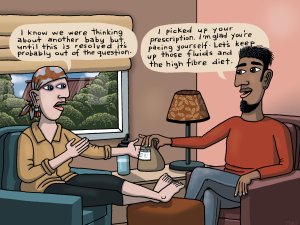Academic pharmacist Nataly Martini highlights the importance of understanding non-Hodgkin lymphoma and pharmacists’ roles in managing this condition
FIP and the WHO develop new curriculum guide to improve action against substandard and fake medicines
FIP and the WHO develop new curriculum guide to improve action against substandard and fake medicines
A curriculum guide to support educators in ensuring that pharmacists are better able to prevent substandard or falsified (SF) medicines and medical products from reaching patients is published today by the International Pharmaceutical Federation (FIP) in partnership with the World Health Organization (WHO). In 2017, the WHO estimated that one in 10 medicines in low- and middle-income countries was SF, risking harm to people and reducing the quality of patient care.
“Healthcare professionals are key in detecting and reporting poor quality or fake medical products that have penetrated supply chains, as well as educating and advising patients who have been exposed to them. However, they cite a variety of barriers to reporting, including a lack of awareness and overcomplicated reporting systems. A solution proposed by the WHO was the production of a modular educational curriculum to improve reporting and interventions, and FIP is honoured to have taken on the challenge to develop this for future pharmacists,” said Mr Dominique Jordan, FIP president.
The curriculum guide is a tool for education on SF medical products, which can be adapted to the needs of individual training institutions. It contains a competency framework and practical tips and is supplemented with modules that align with the WHO prevention-detection-response strategy so that pharmacists know how to: identify medicines at high-risk of being SF; prevent these products reaching the supply chain and, if they have, detect them and report them to appropriate regulatory authorities; and intervene to prevent patient harm. These materials, which offer pharmacy educators teaching resources and practical guidance, were developed with the support of the European Commission, and in collaboration with the International Conference of French-Speaking Chambers of Pharmacists, the Commonwealth Pharmacists Association and five universities in sub-Saharan Africa, a region that is particularly vulnerable to these products.
“SF medical products are a constant, pervasive and unacceptable public health threat. The WHO’s holistic strategy of prevention, detection and response to SF medical products requires full inclusion of pharmacists. The unique position of pharmacists as guardians of the supply chain’s integrity allows them to safeguard the quality and safety of medical products before distribution and their vigilance is indispensable. However, too few pharmacists receive formal training on this issue during or after education. This project addresses the training gap in teaching institutions and advances the essential role of pharmacists,” said Ms Pernette Bourdillon-Esteve, team lead (a.i.) Incidents and Substandard/Falsified Medical Products, WHO.
Mr Jordan added: “This resource is designed to increase and improve both education and awareness levels of pharmacists on SF medical products. We believe that it will be of use not only for our existing collaborators, but also for more countries in the African region and beyond.”
Background
Under the Global Surveillance and Monitoring System, the WHO maintains a case-reporting database that currently holds over 3,000 records of SF medical products, registered since 2013. It should be noted that as a case-reporting system, this database cannot be used to extrapolate regional or global prevalence rates of SF medical products. However it has unique added value in analysing the root causes of the issue and identifying corresponding solutions. This is how healthcare professionals, and pharmacists in particular, were recognised as a key stakeholder group, best placed to detect incidents. This capacity should not be restricted to serious incidents and is the driving rationale behind the curriculum guide. A summary of WHO work on SF medical products is available here.
“Curriculum for pharmacy students on substandard and falsified medicines: Curriculum guide and competency framework” is available here.





